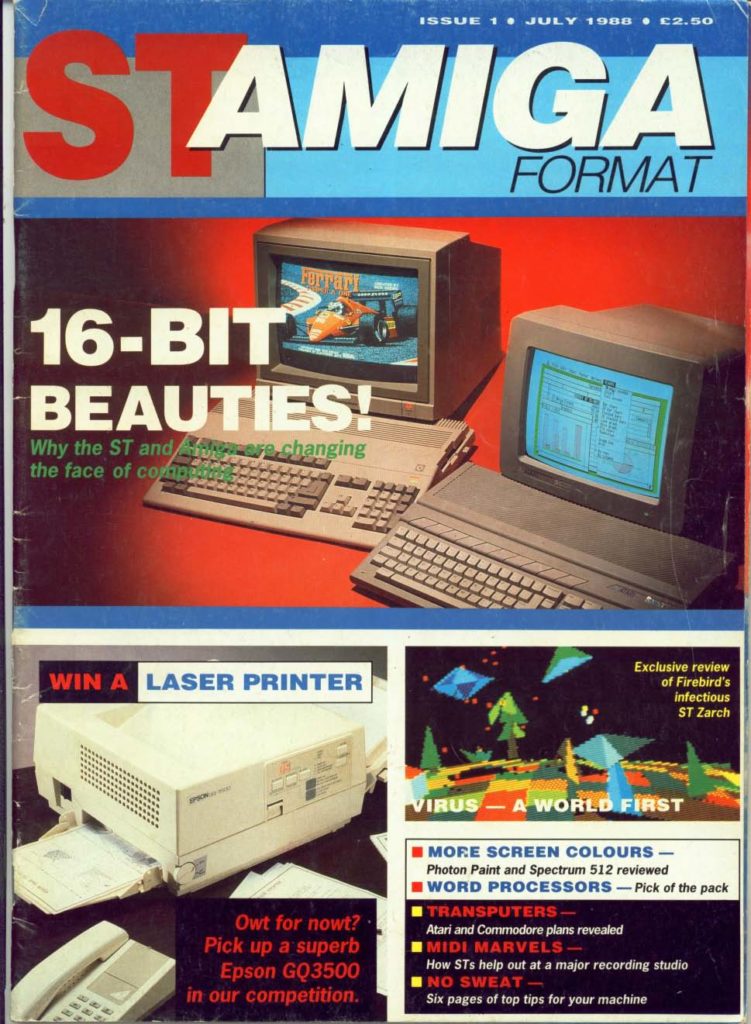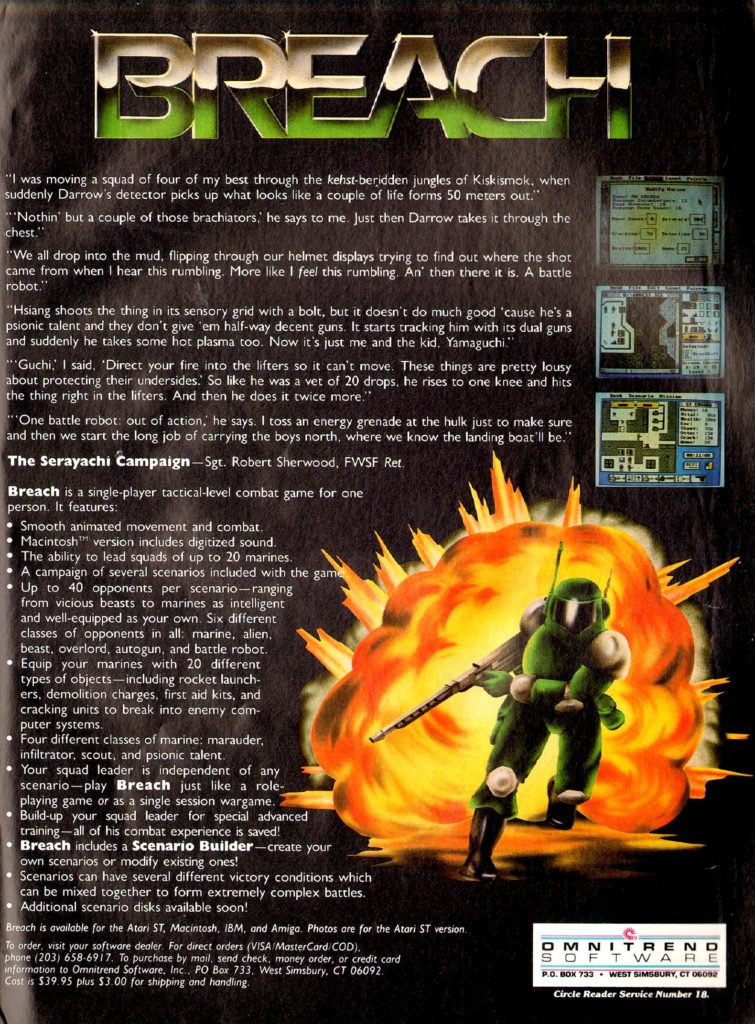Source: ST / Amiga Format – Issue Number 1 – July 1988
ST / Amiga Format was a U.K. based magazine dedicated to the Atari ST and Amiga computers. It would only last for about a year before being split into two separate titles. The first issue of ST / Amiga Format from July 1988 inlcludes:
- News – Hot gossip from both sides of the Atlantic with a Comdex report and news from Atari’s dealer product show.
- Futures – Transputers – are they all hot air? We’ve had a close look at what’s really going on, and reveal the shape of tomorrow’s computers.
- Letters – How can you have readers’ letters in issue 1? Okay, so we’re telling porkies – but read it anyway.
- Gold Dust – Steve Gold plugs into the electronic grapevine. 68020, 68030, Unix, ST Laptops, Amiga graphics upgrades… all the best news is leaked here first.
- Questionnaire – Yes, we want your personal details – inside leg measurements, favorite colors… Tell us all and we’ll build a better magazine.
- Special Offers – All the best ST and Amiga-ware at rock-bottom prices.
- Escape Sequence – Scraping rock bottom at the rear end of the issue. A caustic cast around the months’ worst stories. Also the first episode of our 16 bit cartoon strip.
- Disk Extra – Demos of Oids (ST) and Interceptor (Amiga) plus a host of invaluable utilities for mortals and boffins alike.
- Graphics
- Photon and Spectrum – Reviews of two brand new graphics packages – Photon Paint for the Amiga and Spectrum 512 for the ST.
- Music
- Animal House – Chris Jenkins went along to the Animal House recording studio to see how professional rock stars use the ST’s MIDI capabilities.
- Pro-Sound Designer – A look at what promises to be the most exciting music package yet for the Amiga, courtesy of Eidersoft.
- Special
- Word Processors
- Competition – An Epson GQ3500 laser printer must be won in this brain-taxing competition, plus a consolation prize of a 24-pin LQ850.
– It’s the single most important serious application for a computer. We check out the full range of WP packages, on both ST and Amiga.
…and more!




